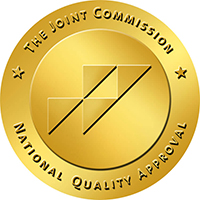We are bringing you a series focusing on porn addiction and how it can be a detrimental activity that may have physical, psychological and emotional effects. It’s not a comfortable topic for most individuals because the compulsive behavior already created disconnection from yourself and others. This series will tackle interpersonal issues that can arise due to excessive pornography consumption, as well as the withdrawal symptoms and treatment options.
Part 1:
- Definition
- Possible causes
- Signs and symptoms of porn addiction
What is Addiction?
An addiction is more than a strong desire for something. It's a medical disease that affects the brain and body, making a person feel driven to keep using a substance or engaging in an activity even if it's harmful. The majority of addiction studies show that it stimulates brain areas related with motivation and reward.
Addiction specifically affects the dopamine system in the body. When someone with an addiction first takes the substance or engages in the behavior, their dopamine levels skyrocket resulting in feelings of pleasure and satisfaction. Their bodies may generate less dopamine over time causing them to rely on the substance or activity to feel the dopamine high. Addiction affects other parts of the brain as well, gradually altering it and making it more difficult to resist the addictive drug or activity.
Brain’s Reward Center

Porn addiction occurs when a person's emotional need for pornography becomes so strong that it affects their everyday life, relationships and capacity to function. These days, since internet access is effortlessly easy, online pornography has become one of the internet-specific activities that has the potential to become addictive. Continued usage in this manner can lead to financial, legal, career and interpersonal problems as well as personal issues with a variety of serious consequences. Feelings of helplessness and continued usage despite negative consequences are referred to as "online sexual compulsivity" or "Problematic Online Pornography Use."
In general, CSBD (Compulsive Sexual Behavior Disorder), often known as sex addiction or porn addiction, is characterized by a conscious or unconscious urge to avoid uncomfortable feelings. Sex and porn or, whatever your undesired behavior is, serves as an anesthetic much like other obsessive or compulsive behaviors or addictive drugs. To put it another way, it's a habit that numbs away unpleasant thoughts and sensations. Or, at least that's how it starts, But after a while, it's simply what you do to feel normal.
What may be the cause?
Meanwhile, advocates of the existence of pornography addiction say that like other addictions, it is a complicated issue with a variety of probable causes. Some of these factors might be:
- Mental health issues: A person may use pornography to cope with psychological discomfort.
- Relationship issues: Pornography may be a way for people to express their sexual unhappiness.
- Unhealthy cultural norms: Ideas about how individuals should appear and behave during sex, the sorts of sex they should enjoy and other similar standards may attract some people to pornography.
- Biological aspects: Certain biological variables, such as changes in brain chemistry as a result of watching porn, may raise the likelihood of addiction.
What are the signs and symptoms?
Pornography addiction is defined as a person's emotional dependence on pornography. It disrupts their day-to-day activities, may alter interpersonal boundaries and will change their definition of intimacy or pleasure. This is a relatively frequent form of dependence. This is why, before things get out of hand, you should pay attention to the indications of porn addiction.
Some healthcare experts and counselors think that while pornography is not inherently harmful, it has the potential to become. Depending on the individual or their partner's perspective, if shame becomes central, sex changes.
Some indications that pornography use is becoming problematic:
- A person’s sex life is becoming less enjoyable.
- Pornography is causing relationship problems or is making a person feel unhappy with their partner.
- A person engages in dangerous conduct, such as viewing pornography at work.
- Feeling more distant in any type of relationship.
Some additional indicators that a person is developing an unsafe relationship with pornography include:
- They disregard other responsibilities to watch pornography.
- They watch even more extreme pornography in order to receive the same relief that less extreme pornography used to provide.
- They feel upset or embarrassed after watching pornography, yet, they continue to do so.
- They want to quit using pornography, but unable to do so.
- They spend a lot of money on pornography, potentially at the expense of daily necessities like food.
- They use pornography as a coping mechanism for sadness, anxiety, insomnia or other mental health issues.
- They hide their habit and dependency.
As with any addiction, the person suffering from it may feel ashamed of their actions. If you feel like you or your spouse are displaying indications of porn addiction, it's critical to be able to speak freely about it. Anyone can improve if they are willing to accept help.
References:
1. de Alarcón, R., de la Iglesia, J. I., Casado, N. M., & Montejo, A. L. (2019). Online Porn Addiction: What We Know and What We Don't-A Systematic Review. Journal of clinical medicine, 8(1), 91. https://doi.org/10.3390/jcm8010091







